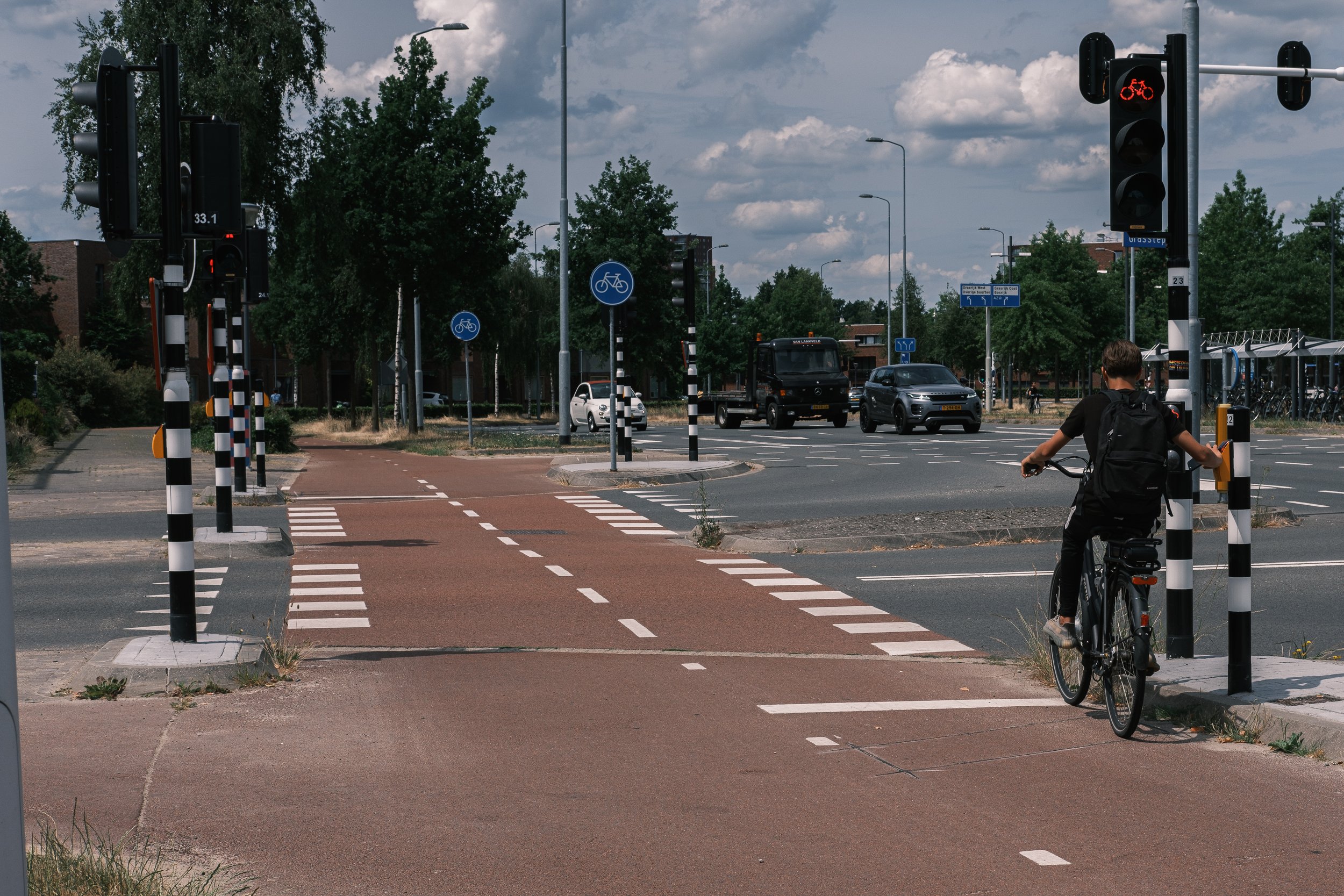Safer and More Efficient Bicycle Signals
Imagine a traffic signal that is aware you’re arriving on a bike and decides to adjust its timing to give you a green light without needing to stop. It doesn’t happen every time, but when it does, it’s quite special!
Flashing pay attention signal making right turning drivers more aware of conflicts
Reduce Conflicts
This is another the Dutch do bicycle infrastructure better blog posts, this time focussed on intersections and particularly signalized intersections. The best way of reducing conflicts is of course to reduce conflicts. By that I mean separate phasing for vehicle and bicycle phases, while this can be achieved in many ways, it’s surprising how many single lane roads widen to three lanes at intersections, meaning the through, left and right vehicle movements can all be controlled individually.
Thus, when the bicycle phase has a through movement, the vehicle right turn has a red signal. There’s probably some other phases going at the same time, usually the vehicle through movements, then, to get some efficiency out of the intersection, the right turns will likely go with the left turns from the cross street. Sometimes extra vehicle lanes can improve the safety of people on bicycles.
There are also the bicycle only phases in cities such as Haarlem or Groningen which we didn’t come across anywhere else on this trip, you can read more about those in fietspad.
A single lane road that widens to three at the intersection to allow clever phasing
Even in the Netherlands, not all intersections have the luxury of multiple approach lanes and where there is a shared through and right that operates in the same signal stage as the bicycle phase, they at least go the extra mile and add flashing let op! signage. Pay Attention! in English. Much better than our static yield to bike sign in Canada that is nowhere near as good at catching drivers attention.
Let Op! or Pay Attention!
A video of one flashing…
Not to praise the Netherlands entirely, they do still have static signage in some places, albeit I like that they place it on the signal pole, not in advance. Thus when you’re sitting waiting at the light, you’re also being reminded to pay attention!
Static pay attention signage
Detect Everybody
So by design, conflicts are managed better, but what about efficiencies, almost every traffic signal with protected bike lanes that I saw had detector loops in the bike path in advance of the signal and at the stop line.
Still red, the controller decided something else was a higher priority on this occasion.
There is nothing quite so satisfying as cycling over the loop on approach and seeing the signal change the moment you ride over it. It doesn’t happen all the time of course. It’s judging all approaches to the intersection, be that bicycle, bus, automobile, or pedestrian, and deciding who gets green based on some pre-programmed priorities.
I’ve heard about the signals being programmed to favour the person walking or riding a bicycle more, particularly in winter where it may be less comfortable to wait in bad weather, even employing rain detection. But just as important as people walking and riding a bicycle are, it may prioritize a bus over a bicycle as it’s a more space efficient mode of transport. Saving a busy bus 10 seconds, might multiply that benefit by say 20, 30, 40, or 50 people on board.
Pushing the bike beg button, but the loop at the signal usually activates the signal
In the Netherlands it seems like it is the default to detect everybody. In North America, rarely even an afterthought. Let’s do more bicycle detection at signals… Maybe video detection will be an easier retrofit in North America and become more reliable as AI improves people detection. We have no issues adding detection for vehicles, let’s do it for people out in the elements… People that our modal hierarchy often claims to prioritize…
Explain this one to me…
Finally, it seems that not all signals are so smart, or at least I couldn’t figure this one out. In this series of images - and I’ve included the camera time stamp in the description (just hover over the image to see) - there are people on bicycles and one on foot at the same road crossing, both with all the same vehicle conflicts. You would expect them to get the bike and walk signal at the same time or thereabouts, you could maybe argue a turning vehicle would clear the bike crossing fractions of a second before the pedestrian crossing, but we’re talking fractions of a second. Instead, the pedestrian signal doesn’t change until around 25 seconds after the bike signal turns green. Could it be that the pedestrian didn’t push the beg button? Is that possible in the Netherlands? If you know, let me know…
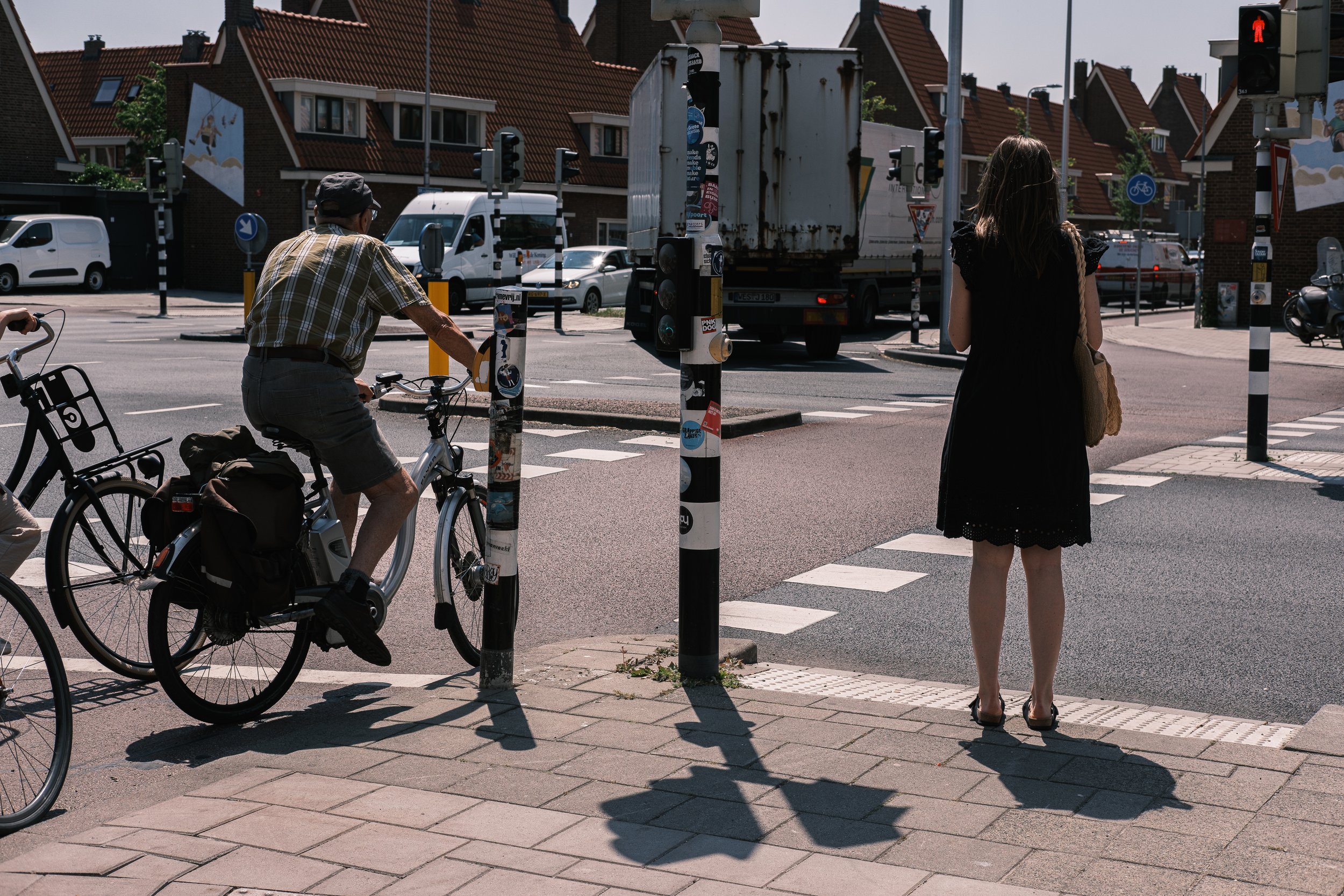

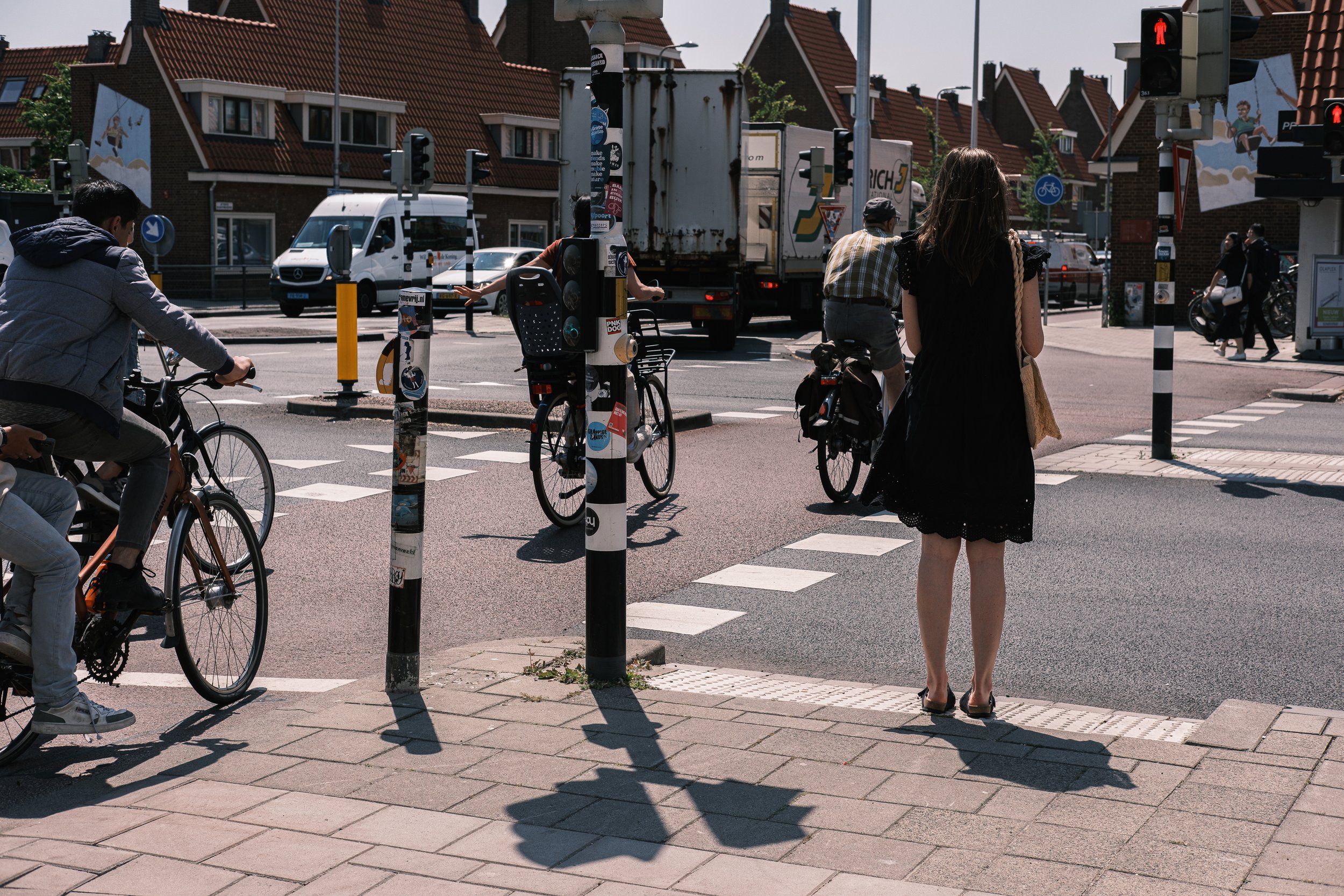
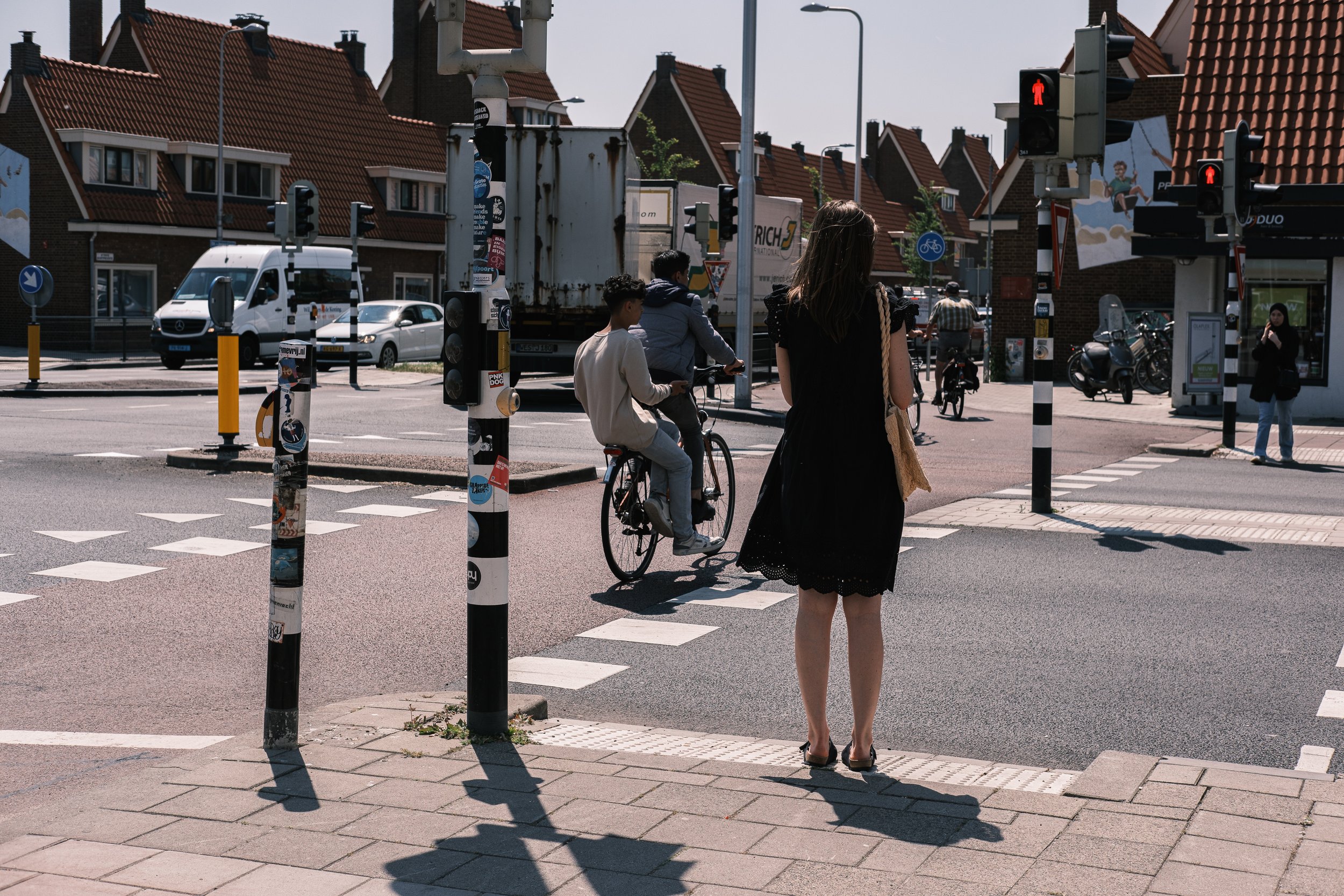
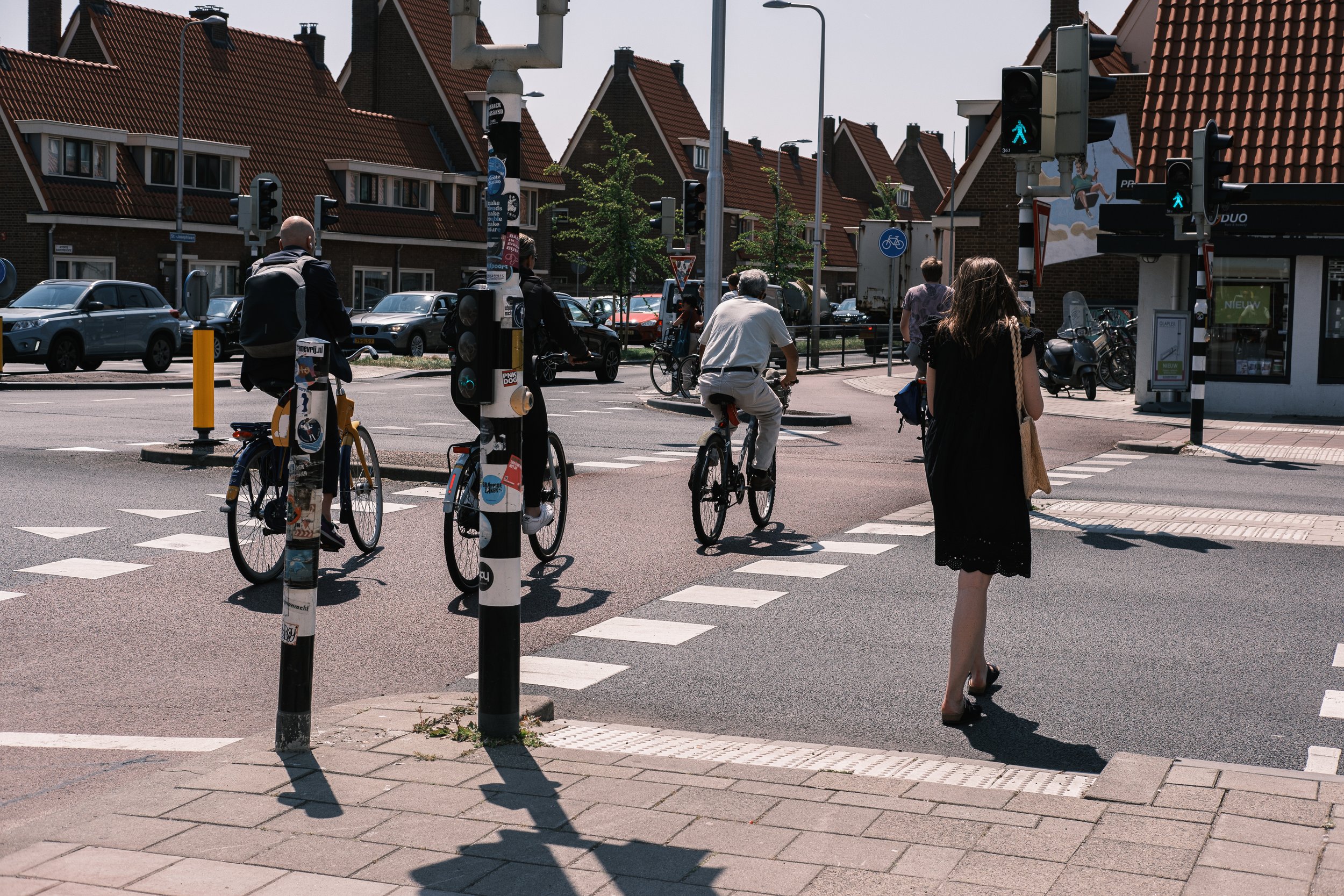
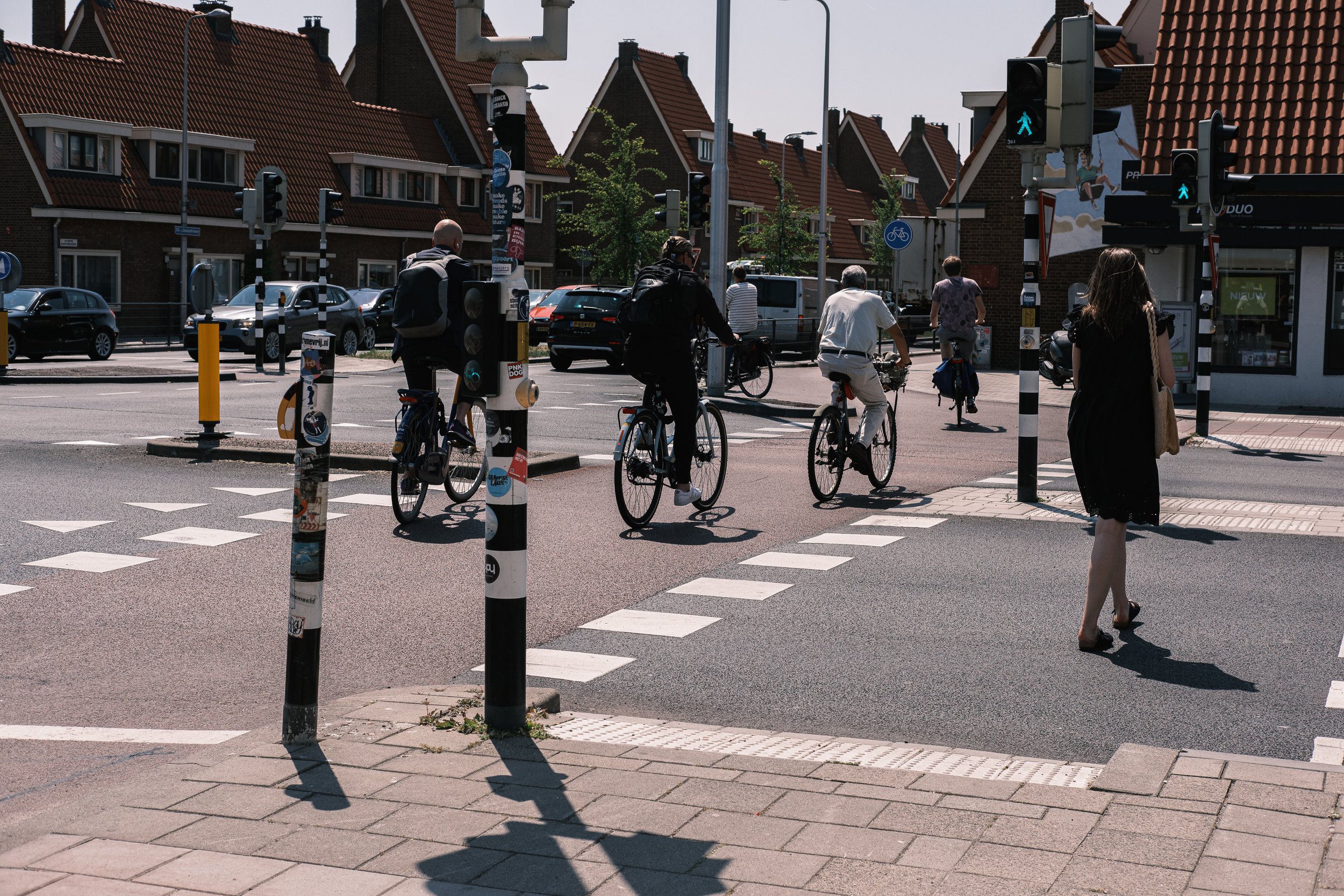
To summarize, separate turning movements for people driving to allow efficient separation from people riding a bicycle. If you can’t, add better signage, and finally, optimize based upon the modal hierarchy by detecting all modes.







